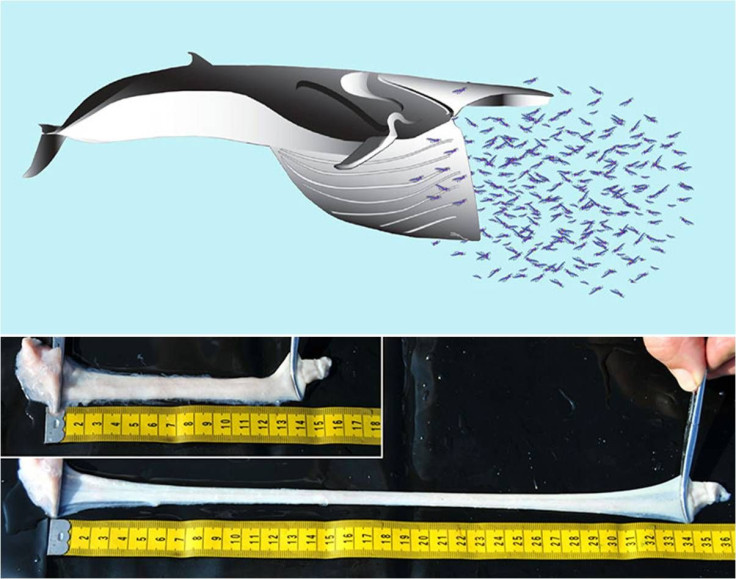Giant Whales Have Stretchy Bungee Cord-Like Nerves In Their Mouth

A team of researchers has found a unique mechanism in the mouth and tongue of gigantic whales that helps them gulp huge amount of water and food, often larger than the volume of their own body. The giant whales have a distinct nerve structure, which can double in length and then recoil like a “bungee cord” while the animal feeds, the researchers said in a study, published in the journal Current Biology on Monday.
The new study is expected to help better explain how the massive whales are able to inflate an immense pocket between their body wall and the overlying layer of fat to capture prey during feeding dives. As part of the study, researchers examined “rorqual whales,” which are the largest group among baleen whales, and include blue whales and fin whales. The latest discovery was made when the researchers accidentally stretched a thick cable found in the jaw of a fin whale.
“This discovery was totally unexpected and unlike other nerve structures we’ve seen in vertebrates, which are of a more fixed length,” Wayne Vogl of the University of British Columbia (UBC) in Vancouver, and the study’s lead author, said in a statement. “The rorquals’ bulk feeding mechanism required major changes in anatomy of the tongue and mouth blubber to allow large deformation, and now we recognize that it also required major modifications in the nerves in these tissues so they could also withstand the deformation.”
During feeding dives, the whale opens its jaw until it is almost perpendicular to the rostrum, and then the highly compliant floor of the oral cavity is inflated by the incoming water. According to the researchers, multiple lunges can occur during a single dive, and the average time between lunges is only over 40 seconds.
“Our next step is to get a better understanding of how the nerve core is folded to allow its rapid unpacking and re-packing during the feeding process,” Robert Shadwick, a zoologist at UBC, said in the statement. It is unclear whether the same stretchy nerves are common among feeding mechanisms used by other animals, for example, the ballooning throats of frogs, or the long and fast tongues of chameleons.
© Copyright IBTimes 2024. All rights reserved.






















